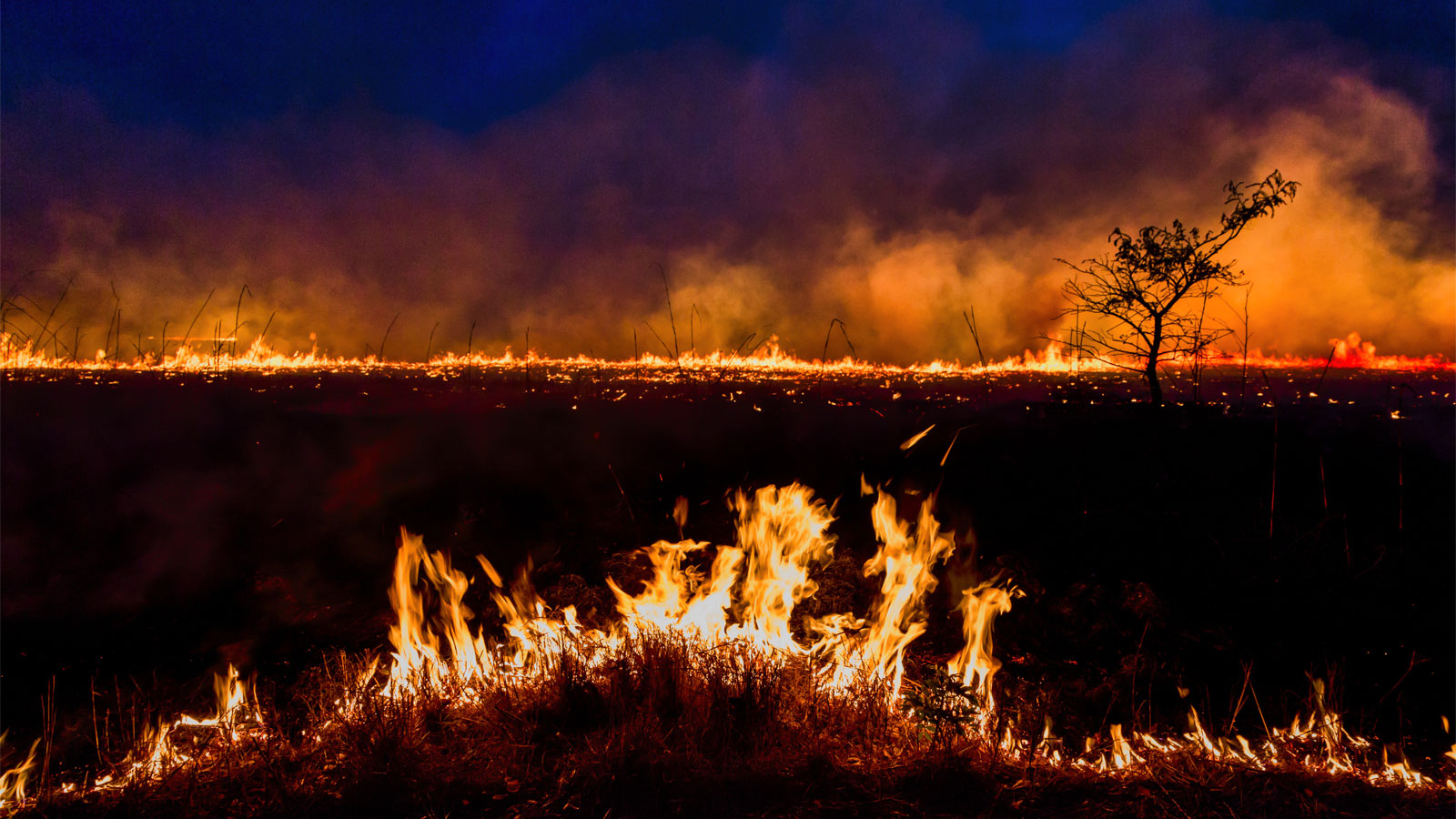In the past few years, wildfires have broken out around the world at a scale rarely experienced by modern humans. In 2020, fires in the western U.S. charred more than 10 million acres, killed at least 43 people, and inflicted $16.5 billion in damage. Australia’s Black Summer, the devastating fire season that started in late 2019 and burned through early 2020, razed some 4.4 million acres on the continent, directly killing at least 34 people and harming billions of animals.
By 2100, the likelihood of unusually intense fire seasons happening in a given year will have increased by 31 to 57 percent, depending on the rate of global climate change. That’s according to a new report from the United Nations Environment Programme, which also says that the annual number of wildfires around the globe could rise 50 percent by the end of the century. The rise in the number and frequency of wildfires will exacerbate global warming by releasing the carbon stored in trees. That will create a vicious cycle in which climate change and wildfires intensify each other.
Already, wildfires cost governments billions of dollars, contribute to adverse health outcomes, and claim hundreds of lives each year. Those impacts are projected to get worse, the report says, as a combination of rising temperatures and poor forest management practices give rise to monster wildfire seasons. Wildfires won’t just continue to grow in intensity and frequency, the report warns, they’ll start cropping up in areas that haven’t seen fires in millennia. Even the Arctic, a region that has historically been too wet and cold for large wildfires, could start to regularly host big fires like it did in 2020 and 2021 as global warming transforms permafrost and peatland swamps from soggy, fire-resistant areas into flammable tinderboxes.
“What climate change is doing is it’s leading to a situation where wildfires are burning hotter and burning longer in places where they already occur regularly,” Hugh D. Safford, a coauthor of the report, a former Forest Service ecologist, and a member of the research faculty in the Department of Environmental Science and Policy at the University of California-Davis, told Grist. “But they’re starting to flare up in places where they’re unexpected, too,” he said, citing recent fires in Indonesia’s peatlands. The report shows that fires could also start cropping up in eastern Asia’s arid areas, parts of the central United States, and the South American desert.
Some of the projected fire risk outlined in the U.N. report is already baked in. “Even with the most ambitious efforts to curb greenhouse gas emissions, the planet will still experience a dramatic increase in the frequency of extreme fire conditions,” more than 50 experts from research institutions, government agencies, and international organizations from around the world wrote in the report, which is the Environment Programme’s first effort to assess the scale of the global wildfire crisis. But that doesn’t mean that all hope is lost. On the contrary, the report shows that there are actions governments can take right now to alleviate future fire risk.
The first and most important step nations can take is to spend more money on fire prevention — practices like thinning forests so that trees aren’t crowded close together and clearing brush and other fuels from the forest floor by burning or mulching them — instead of pouring all of their resources into stopping fires once they start. Right now, the world spends about two-thirds of its wildfire-related resources on responding directly to fires when they break out. Just 1 percent of fire-related expenditures go toward planning and prevention, the report said. “The biggest issue is that we are almost entirely playing a reactionary role rather than a proactive role,” Safford said. The U.S. Forest Service, for example, still spends roughly two-thirds of its budget on fire suppression when it would be more cost-effective to put more resources toward managing forests before they start burning. “It’s beggaring the entire Forest Service budget,” Safford said. “And the paradox is that it’s increasing the probability of catastrophic outcomes in the long run.”
Aside from directing more money and personnel to preventive activities like prescribed burning, the report recommends that governments also collaborate with other countries and with Indigenous peoples who have expertise in fire management dating back hundreds or thousands of years. Ultimately, the report recommends creating an international standard for wildfire management that’s the product of joint cooperation and problem solving between nations that regularly deal with fire. Right now, nations frequently tap one another for help quenching fires. The report’s authors want countries to work together before fires break out, too.
Some countries are already beginning to think more collaboratively about solving their wildfire problems. Officials in parts of Australia and California have turned to Aboriginal Australians and Native American tribes, respectively, to help manage the landscape. The report also urges governments to invest in research on fire behavior and mapping, so that firefighters have more information going into blazes and firefighting agencies can deploy resources in smarter and more effective ways.
The stakes are high. If the world doesn’t start thinking about managing fire more carefully, public health, water quality, and entire ecosystems could degrade even further in coming years, particularly in low-income countries with few resources to help communities recover post-disaster. Fires could even give rise to new zoonotic infectious diseases similar to COVID-19 by pushing animals out of their natural habitats and closer to areas where humans live, according to the report.
The question for Safford is whether governments will start planning for wildfire in time to limit the damage. “When is it going to be that we’re going to burn up so much and kill so many people that people are finally going to say, ‘Fire is an inevitability; we need to learn how to live with it, and we need to learn how to manage ecosystems that are resilient to it’?”




